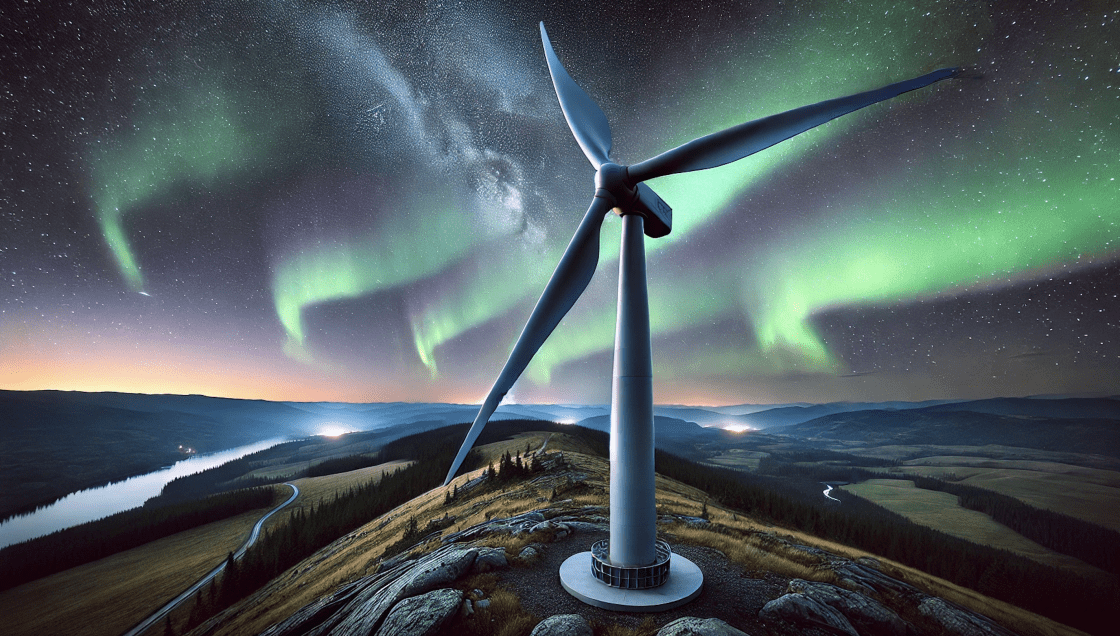British Columbia, a province celebrated for its breathtaking landscapes and natural resources, is setting an extraordinary example in renewable energy development. With a bold initiative to integrate nine new wind energy projects into its power grid, the province not only advances its clean energy agenda but also redefines relationships with First Nations Indigenous communities. This initiative symbolizes the intersection of sustainability, reconciliation, and economic progress, creating a model for the rest of Canada and beyond.
A Groundbreaking Announcement
The government of British Columbia, led by Premier David Eby, has approved nine wind energy projects projected to generate nearly 5,000 gigawatt hours of electricity annually. This increase equates to powering 500,000 homes and boosts BC Hydro’s renewable energy supply by 8%. This milestone, announced in December 2024, reinforces B.C.’s reputation as a clean energy superpower.
These projects represent a $5 billion to $6 billion private investment and feature historic Indigenous partnerships. Eight of the nine projects involve a 51% equity ownership by First Nations, ensuring direct economic and leadership benefits for Indigenous communities. This approach aligns with the province’s commitments to reconciliation and energy sovereignty.
The Key Players and Their Roles
The success of these wind energy projects is driven by the collaboration of numerous individuals, organizations, and government bodies, each playing a pivotal role:
- First Nations Partners: Indigenous communities are at the heart of this initiative, with key participants including the Upper Nicola Band, Lower Nicola Indian Band, Ashcroft Indian Band, Westbank First Nation, Lheidli T’enneh First Nation, Stellat’en First Nation, Western Moberly First Nation, Saulteau First Nation, and Wei Wai Kum First Nation. These communities provide leadership, equity investment, and cultural stewardship to ensure the projects align with Indigenous values.
- Government Leadership: Premier David Eby and Adrian Dix, Minister of Energy and Climate Solutions, have championed these initiatives as part of B.C.’s broader clean energy strategy. Tamara Davidson, Minister of Environment and Parks, has also played a key role in streamlining regulatory processes while maintaining environmental protections.
- BC Hydro: As the province’s crown utility, BC Hydro selected the projects through its 2024 Call for Power. Chris O’Riley, President and CEO of BC Hydro, emphasized the importance of Indigenous ownership, marking a historic step forward in energy reconciliation.
- David Suzuki Foundation: Thomas Green, Senior Climate Policy Adviser, lauded the projects for their potential to provide clean, affordable electricity and foster community benefits. The foundation highlighted the importance of ensuring that these resources are utilized for local electrification, avoiding diversion to energy-intensive liquefied natural gas (LNG) operations.
- Clean Energy Association of British Columbia: Kwaatuma Cole Sayers, Executive Director, described the initiative as a tangible step toward climate action and reconciliation, solidifying B.C.’s leadership in renewable energy.
- Private Sector Partners: Prominent independent power producers (IPPs) such as Innergex Renewable Energy Inc., EDF Renewables, Capstone Infrastructure, and Ecoener are developing the projects, bringing technical expertise and investment.
The Projects and Their Geographical Footprint
The nine projects span the diverse geography of British Columbia, from Vancouver Island to the Peace Region in the north:
- Brewster Wind Project (Vancouver Island) – Partnered with Wei Wai Kum First Nation.
- Highland Valley Wind Project (South Interior) – Ashcroft Indian Band partnership.
- Mount Mabel Wind Project (South Interior) – Lower Nicola Indian Band collaboration.
- K2 Wind Project (South Interior) – Developed with Westbank First Nation.
- Nithi Mountain Wind Project (North Coast) – Stellat’en First Nation partnership.
- Taylor Wind Project (Peace Region) – Saulteau First Nations leadership.
- Stewart Creek Wind Project (Peace Region) – West Moberly First Nation involvement.
- Nilhts’I Ecoener Project (Central Interior) – Lheidli T’enneh First Nation collaboration.
- Boulder and Elkhart Wind Project (South Interior) – Upper Nicola Band partnership.
Renewable Energy as a Cultural and Economic Catalyst
The integration of First Nations equity in these projects represents a profound shift in energy governance. Indigenous leadership ensures that cultural values, environmental stewardship, and community priorities are central to project planning and implementation. Kwaatuma Cole Sayers noted that these projects exemplify economic reconciliation, creating opportunities for local employment and training while enhancing energy sovereignty.
Environmental and Economic Synergy
Wind energy, as one of the cheapest forms of power, complements B.C.’s existing hydroelectric infrastructure. The province’s flexible hydroelectric dams act as natural batteries, balancing intermittent renewable sources like wind. This integrated system ensures reliable, affordable electricity for both households and industries.
Moreover, the decision to exempt these projects from traditional environmental assessments underlines the urgency of addressing climate change. As Minister Adrian Dix stated, this streamlined approach accelerates the deployment of clean energy without compromising environmental integrity, supported by a rigorous provincial permitting process.
The Broader Context: A Clean Energy Future
British Columbia’s leadership is not occurring in isolation. The province’s actions contribute to Canada’s national goal of achieving a net-zero electricity grid by 2035. It also aligns with international efforts, as G7 countries and organizations like the International Energy Agency emphasize the necessity of transitioning to renewable energy.
However, challenges remain. The LNG industry’s demand for energy threatens to divert resources from local electrification efforts. Thomas Green and the David Suzuki Foundation have called for policies ensuring that clean power benefits households and businesses rather than perpetuating fossil fuel dependence.
B.C.’s Role as a Global Model
British Columbia’s approach to renewable energy sets a global benchmark. The combination of Indigenous partnerships, innovative policies, and diverse energy resources positions the province as a leader in the transition to sustainable power. The successful integration of these wind projects demonstrates how environmental goals and economic growth can coexist, fostering a thriving, inclusive future.
As Premier David Eby aptly stated, “Clean and affordable electricity is key to powering economic growth and unlocking private-sector investment that creates thousands of good jobs here in British Columbia. These projects will significantly expand our electricity supply—making B.C. a clean-energy superpower.”
A Sustainable and Inclusive Vision
The announcement of these wind energy projects is more than an investment in infrastructure; it is a testament to British Columbia’s commitment to reconciliation, sustainability, and innovation. By forging stronger bonds with First Nations Indigenous communities, the province is redefining what clean energy leadership looks like, ensuring a future where economic prosperity and environmental stewardship walk hand in hand.


